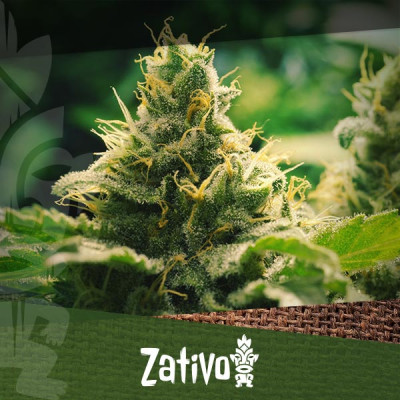Don't have an account?
Register NowYou have to add to cart at least 5 bottles or any program to make checkout.
- BlogTop 10 Sacred Plants From Around the World
Top 10 Sacred Plants From Around the World
Published: August 27th, 2020
Categories:
Other subjects • Plants and Seeds
Earth—what a fascinating experience. The ball of rock cruising through the cosmos that we call home gives life to innumerable unique organisms, from gargantuan water-dwellers to microscopic members of the soil. Among these lifeforms, Mother Nature has crafted a pantheon of entheogenic plants and fungi that add even more mystery to our existence.
These herbs, trees, cacti, and mushrooms differ greatly from other members of their kingdoms. They manufacture molecules that catapult the mind into other dimensions, stimulate the nervous system, and plunge users into states of euphoria. Humans have utilised these sacred substances since antiquity to tap into altered states of consciousness for ceremonial, religious, and even recreational purposes.
Check out the top 10 sacred plants from around the world below to discover the chemical cocktail that nature has to offer.
10. Basilicum
A culinary herb to most, basil possesses a sacred status in the Hindu religion. Sweet basil (Ocimum basilicum) brings delightful flavours and aromas to soups, salads, and pasta dishes, whereas holy basil (Ocimum sanctum) receives reverence and prayer in India and elsewhere. Ancient Hindu texts state that Lord Krishna blessed the Goddess Vrinda—protector of the sacred land of Vrindavan—to take the shape and form of a basil plant. Millions of Hindus all over the world worship this plant species on a daily basis and even keep it in their homes. Although basil doesn’t catalyse an altered state of consciousness, it certainly holds a special and sacred place in the world.
9. Tobacco
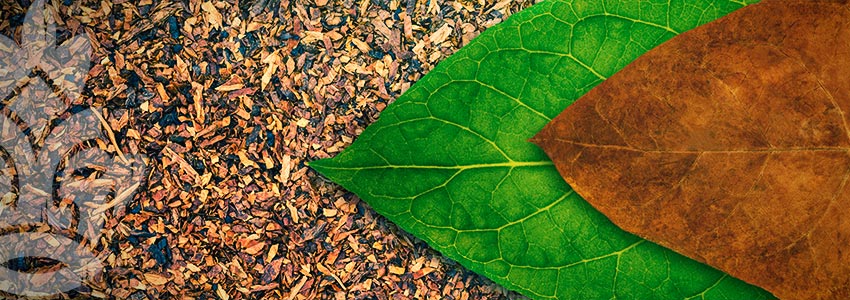
In the modern world, tobacco is associated with cigarettes—highly addictive sticks that reduce stress at the price of serious health consequences. However, tobacco has played a much more sacred and revered role in ancient cultures. Native Americans viewed tobacco as a gift from the creator and smoked the substance during prestigious ceremonies such as trade agreements and peace treaties. Known as mapacho in parts of the Amazon, indigenous cultures use tobacco during ayahuasca ceremonies to ground and stimulate participants. Shamans and practitioners use the plant to clear away energies and set intentions before psychedelic voyages.
8. Jurema
Jurema preta (Mimosa tenuiflora) contains one of the most potent hallucinogens on Earth: DMT. Native to the northeastern region of Brazil, the perennial shrub contains approximately 1–1.7% of the so-called “spirit molecule” within its root system. Indigenous groups in the same region of Brazil used the species to create an ayahuasca-like brew known as jurema. The plant serves as a source of DMT, but must be combined with other plants that contain MAOIs in order to stop the body from breaking down the molecule before it enters the brain. The mixture sends users on an intense and prolonged psychedelic experience.
7. Syrian Rue
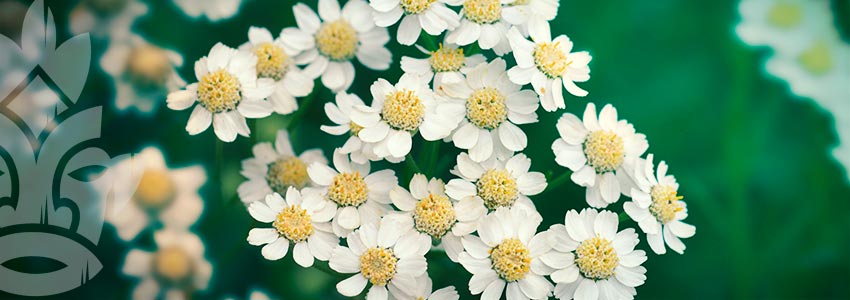
Known by the Latin name Peganum harmala, this herbaceous perennial thrives in temperate deserts and Mediterranean regions from Morocco, Spain, and Italy to Dagestan and Yemen. The shrub produces pretty five-petal flowers and features in the pharmacopoeia of African and Middle Eastern folk practices. The seeds of Syrian rue contain the alkaloids harmaline, harmine, and harmane. These chemicals work to block monoamine oxidase, an enzyme in the gut that swiftly metabolises DMT. Inhibiting this reaction grants DMT passage to the bloodstream and brain. Although Syrian rue doesn’t produce psychoactive effects alone, it serves as a key ingredient in hallucinogenic brews.
6. Magic Mushrooms
Magic mushrooms contain the hallucinogen psilocybin. Upon ingestion, psilocybin breaks down into a powerful molecule called psilocin. These psychedelic fungi appear all over the world, from deep in the Amazon to the quaint meadows of England. Such widespread occurrence means humans have interacted with these species for thousands of years. They inspired Stone Age rock art in Africa and Central Europe and played a fundamental role in religious rites of the Aztecs, where they were perceived as divine. Psilocybin takes users on a deeply introverted voyage into the psyche characterised by visual distortions and confrontation of emotions.
5. Yopo
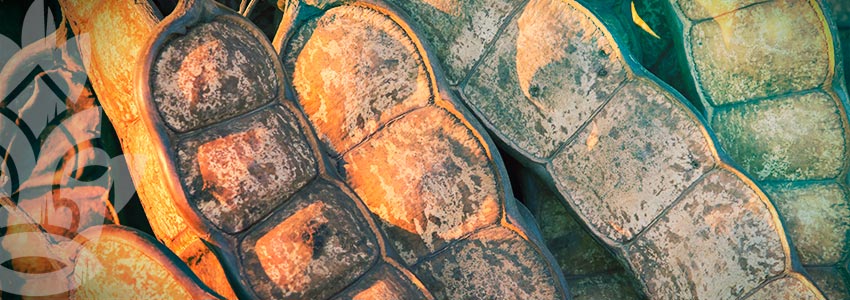
Yopo (Anadenanthera peregrina) stems from the tropical regions of the Caribbean and South America. The perennial tree surges up to 20m in height and guards itself with sharp thorns that protrude from the bark. Native populations of South America use the psychedelic tree during ceremonies and rituals to induce an altered state of consciousness. The species contains DMT in its fruit, beans, pods, and bark, and 5-MeO-DMT in its bark and beans. Evidence suggests natives populations used bone pipes to smoke the yopo seeds over thousands of years.
4. Salvia Divinorum
Salvia divinorum ranks among the most powerful hallucinogenic plants on the planet. It grows in the cloud forests of the Sierra Mazateca in Mexico, where it thrives in moist and shady conditions. The leaves of the species contain an entirely unique chemical known as salvinorin A. The molecule binds to opioid receptors and catapults users into a swirling, confusing, and sometimes terrifying alternative dimension. Traditionally, Mazatec shamans used the plant to induce altered states of consciousness during rituals. The leaves produce their effects after chewing or when drunk as a tea.
3. Peyote
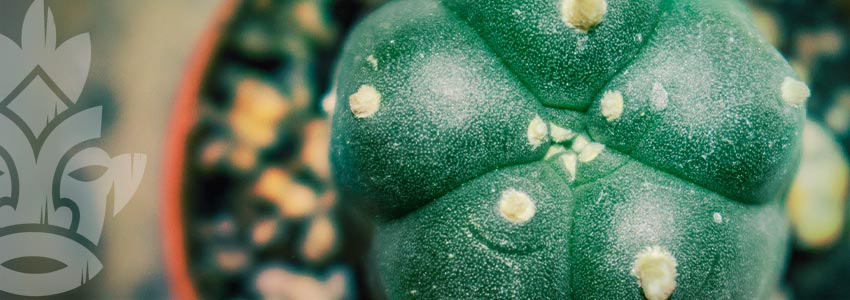
The smooth and spineless peyote cactus (Lophophora williamsii) grows slowly in the deserts of Mexico and southwestern Texas. The dome-shaped cactus forms in tight clusters and displays a blue-green appearance. The species develops around 50 different alkaloids, including the potent psychedelic mescaline. The word peyote derives from the Aztec “peyote”, which translates to “divine messenger”. The cactus forms one of four principal deities of the American Wixarika culture, where it’s used as a visionary sacrament.
2. Lotus Flower
The water lily blue lotus (Nymphaea caerulea) grows along the Nile and other parts of East Africa. The beautiful, pale blue-white flowers played an important role in ancient Egyptian civilisation. Ancient artwork from the region depicts the species in party scenes and rituals, where it was likely used for its deeply relaxing effects. The plant contains the psychoactive alkaloid aporphine, which influences the dopamine system.
1. Cannabis

As the most popular psychoactive plant on the planet, millions of people currently use cannabis on a daily basis to induce euphoria, relaxation, and deep philosophical thought. Humanity has used the herb for thousands of years to worship gods, boost wellness, and even craft rope and paper. Cultures in Afghanistan created crude forms of hash to enjoy higher levels of THC, whereas people of the Indian subcontinent drank cannabis-infused bhang as early as 1000 BCE. More recently, cannabis has played a sacred role in the Rastafari religion, where practitioners use the herb to create divine connections.
YOU MIGHT ALSO LIKE
Related blog posts
- » 25 Practical Tips for Your Next Psychedelic Trip
- » Top 3 Bhang Recipes To Make At Home
- » Do Magic Mushrooms Make You More Creative?
- » Which Chemicals Power Your Psychedelic Experience?
- » 6 Psychonauts Who Changed The Way We Think About Psychedelics
- » How To Find A Trustworthy Shaman
- » How To Prepare For Any Psychedelic Experience
- » All You Should Know About Hawaiian Baby Woodrose

